We built a tool for people who are tired of hearing 'just keep applying'
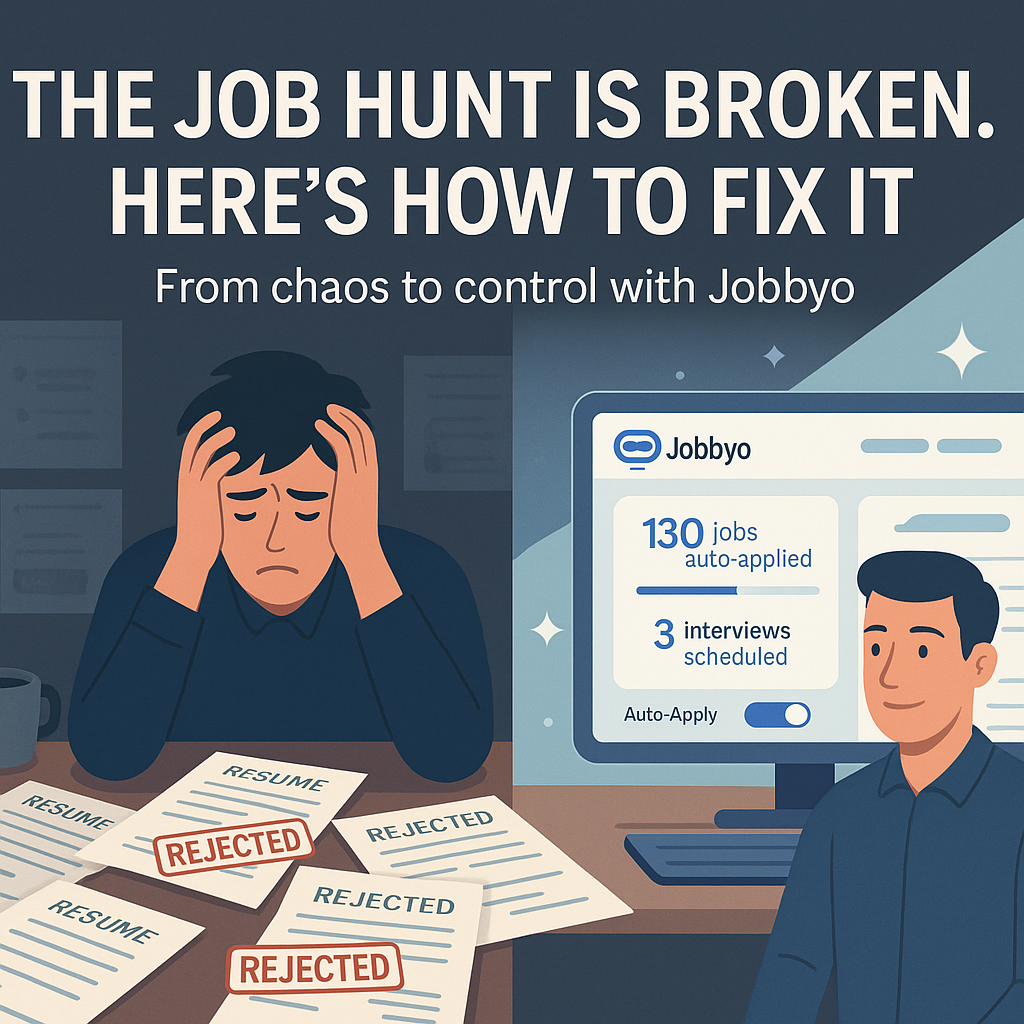
The advice to "treat job searching like a full-time job" is some of the most frustrating guidance people get.
I say this from experience. Our CEO, Thiago, is a developer with over 7 years of experience. He's managed teams of 20+ people and won a national coding competition for an aerospace company. When he started looking for a job before Jobbyo, it took him more than six months.
That has now become normal.
When I was looking for a job myself, it took around four months of consistent application to get an interview, and another two months to land something concrete. Every application was tailored to the job I was applying for.
On Reddit, people are also complaining about the same thing.
Take this post as an example that was published two months ago:
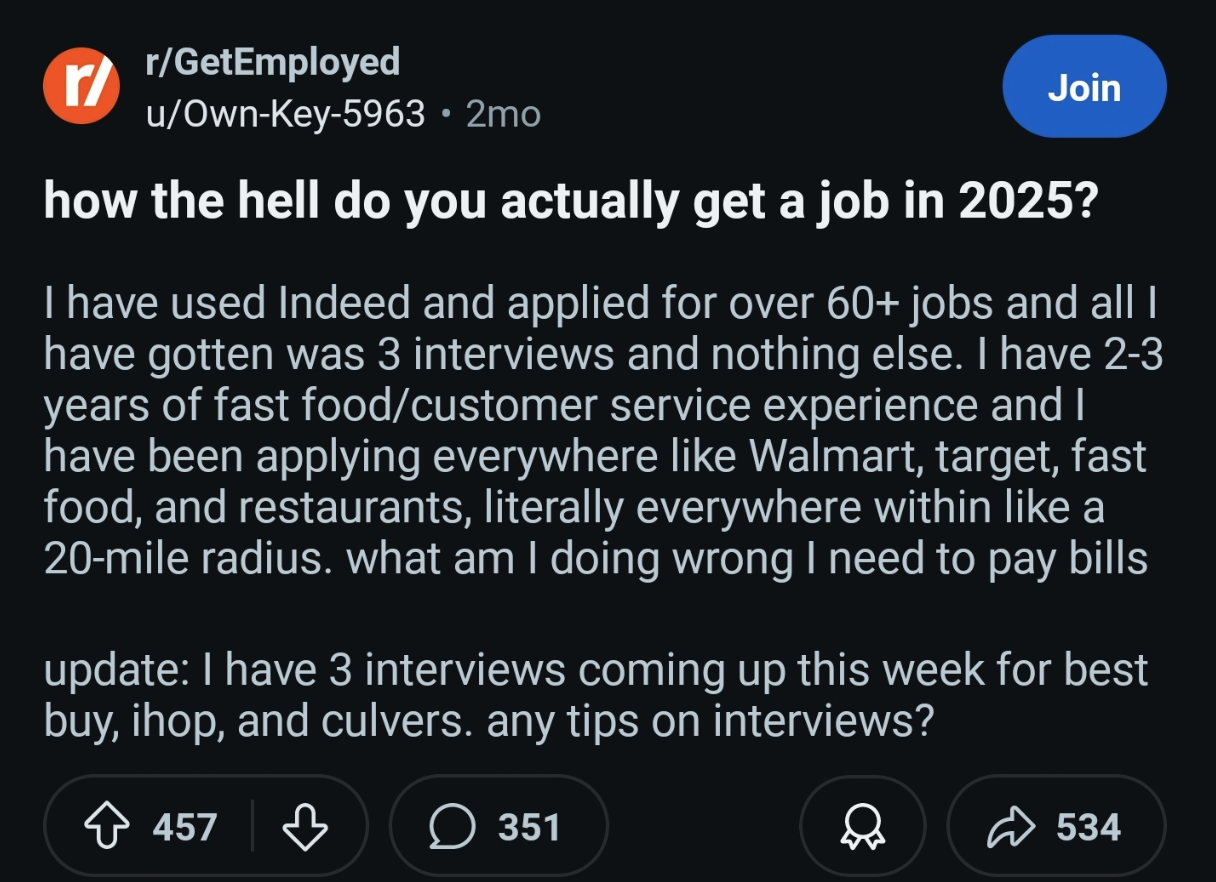
The first comment is someone who's completely given up on job hunting and put some effort into starting their own business.
Now, the advice everyone gives—tailor your resume, write custom cover letters, research the company—isn't necessarily wrong. If you have an inside referral or you're applying for a very specialized role with few applicants, that level of effort makes sense and can definitely work.
But for the vast majority of jobs listed on public boards, that playbook is failing people.
Let's just do the simple math based on stories we see every day. One person sends 300 applications and gets 4 interviews. That's an interview rate of about 1.3%.
What would it take to be in the top 10%? You'd need a perfectly ATS-optimized resume, relevant keywords for each role, a compelling cover letter, and applications submitted within hours of posting. Even then, top performers we see in job search communities report interview rates around 8-12%.
That still means if you're doing everything "right," you're looking at roughly 1 interview for every 10-12 applications. To get 4 interviews, you'd still need to apply to 40-50 jobs, and that's assuming you maintain that top-tier quality on every single application.
This math explains why following traditional job search advice feels so defeating. The guidance was built for a market where 50 applications might land you 5-10 interviews, not one where perfect execution still leaves you playing a numbers game at scale.
The reality is that there are simply too many applicants competing for the human attention that determines whether you advance or not.
So the question becomes: how do you maintain the quality that gets you past filters while achieving the volume that gives you statistical relevance?
That's what we're going to answer in this post today.
Why "Quality" Applications Fail at Scale
The core problem with the "quality over quantity" playbook is that it was designed for a different game. Advice from career experts, like the comprehensive guides seen on sites like Jon Lee's or Celarity, is filled with sensible tips: personalize your outreach, audit your social media, and tailor your resume for every single role. This advice is logical. It assumes a thoughtful human on the other side, carefully considering your well-crafted application.
But what happens when there isn't one? Let's break down why that assumption is fundamentally flawed in today's job market.
Breakdown #1: The Application Black Box and the ATS Gatekeeper
The first barrier your application meets isn't a person; it's a piece of software called an Applicant Tracking System (ATS). Everyone in the job hunt knows about ATS, yet most job seekers fundamentally misunderstand what it does. An ATS is not a sophisticated AI judging your potential; it's a rigid database designed for one purpose: elimination.

It scans for keyword matches, specific formatting, and answers to knockout questions ("Do you have 5 years of experience with X? Y/N").
Your application is being parsed for data, and if the data isn't where the machine expects it, you're rejected before a human ever knows you exist.
This is what recruiters mean when they talk about a "binary" decision. In a r/careerguidance thread, a user with hiring experience noted that they're looking for a simple "Qualified: Yes/No" signal. The ATS is the machine that makes that first cut.
The first step when looking for your next opportunity shouldn't be applying to jobs; it should be building a resume that can get past the gatekeeper.
There are many resume builder tools that come with an ATS grader, and you can easily do this inside Jobbyo.
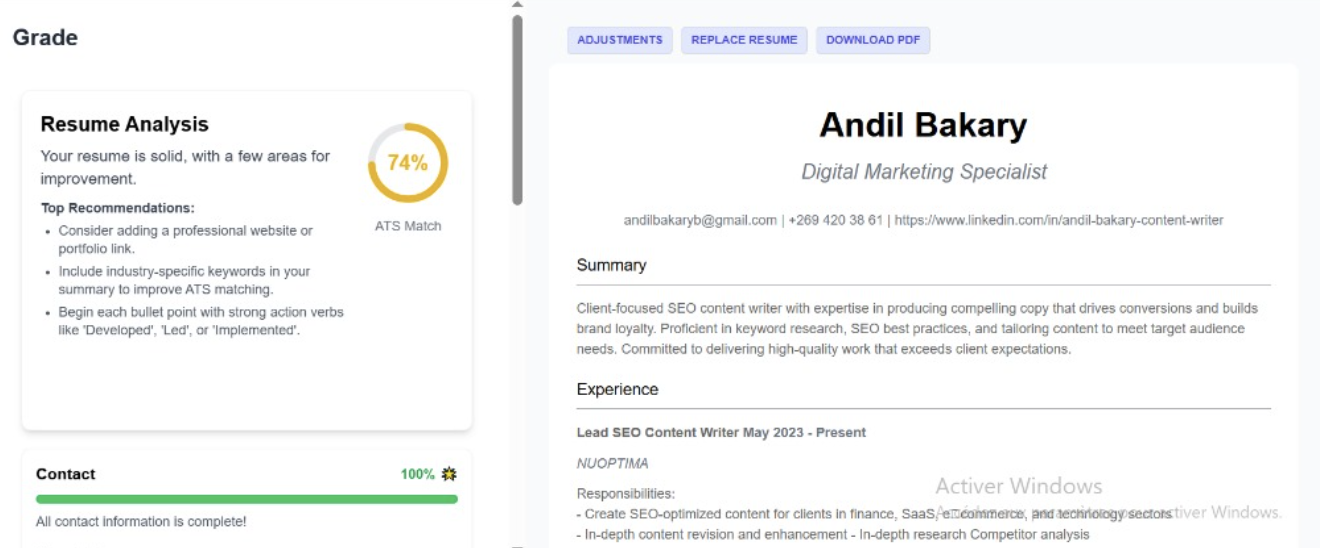
ATS Grader: You get a concrete score (in this case 74/100) that shows how well your resume will be parsed by common ATS platforms.
Content Feedback: The analysis also provides qualitative feedback on the substance of your resume. It might point out that your bullet points are passive ("Responsible for...") instead of active ("Increased revenue by...") or that you lack quantifiable achievements.
Breakdown #2: The Tailoring Paradox
Put yourself in the Recruiters' shoes for a moment, would you even consider an application where the applicant clearly didn't read the job description nor put some efforts to show that he cares about the role? Exactly.
So, sending tailored resumes for each job application shouldn't be an option, it should be the norm. This also makes sense from a competitive landscape. When you think about it, an open position can easily have 200+ applicants within the first hours thanks to LinkedIn and Indeed fast apply.
Umar Farook, a certified professional resume writer, put it really well:

When the recruiter picks up your resume, they want to see something that makes you stand out from the rest. If they can't find anything, you won't make the cut.

But again, let's look at the math from the applicant's side.
A user on r/resumes who applied to 800 jobs and got one interview. If they spent even a conservative 20 minutes tailoring each application, that's over 260 hours of work—nearly seven full-time weeks—for a single conversation. The return on investment is catastrophic, and it's the number one cause of job seeker burnout.

People constantly feel like their efforts are not being rewarded properly, and naturally start doubting their skills and capabilities. When they do find ones they might stand a chance, they quickly become overqualified.
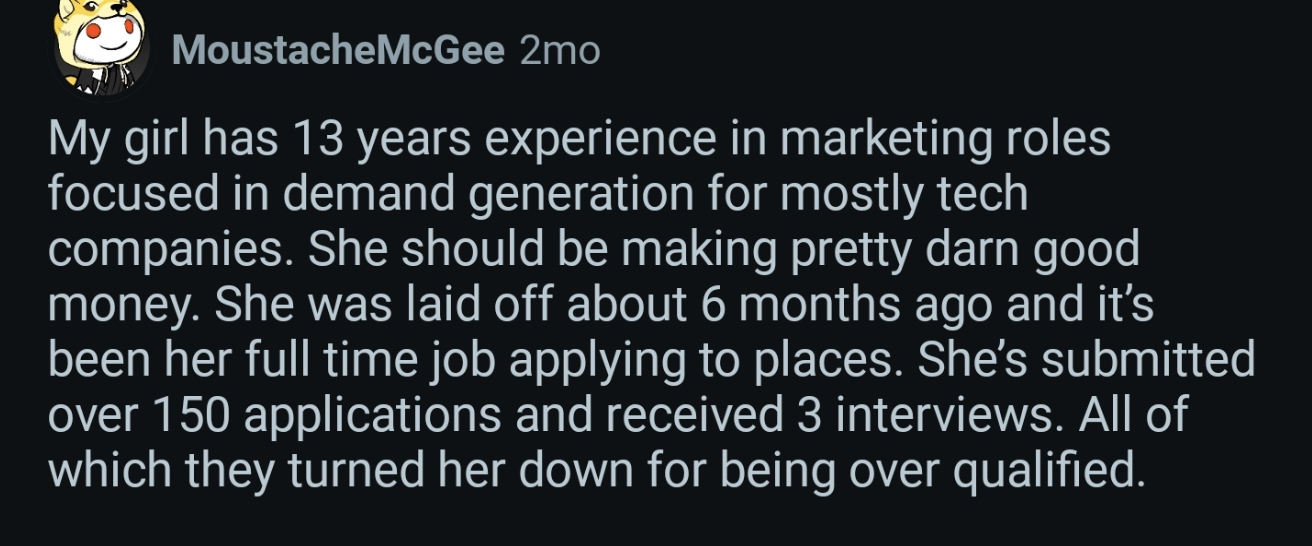
This creates the central paradox:
- To have a statistical chance, you need to apply to hundreds of jobs.
- To get past the filters, you need to tailor every single application.
- Doing both at scale is a recipe for burnout and failure
You are forced to choose between two losing strategies.
How to fix this: The solution is to start with a strong, ATS-optimized master resume, and then make targeted customizations for each role. This is a core part of our workflow.
As our AI sources jobs and queues them in your dashboard, you have a choice. For most roles, you can let your personal job assistant apply and customize every application on your behalf. But for that perfect role, you can also use the custom CV feature to quickly tailor your resume to the specific job requirements.
You simply click the Custom CV button next to the job listing.

Your job assistant will immediately analyze your resume against the job description, identifying exactly which required skills are missing from your current version.

Next, you can select the skills that genuinely match your background, and the system intelligently weaves them into your resume where they'll have maximum impact. The assistant then provides targeted suggestions for optimizing your professional summary and experience descriptions.
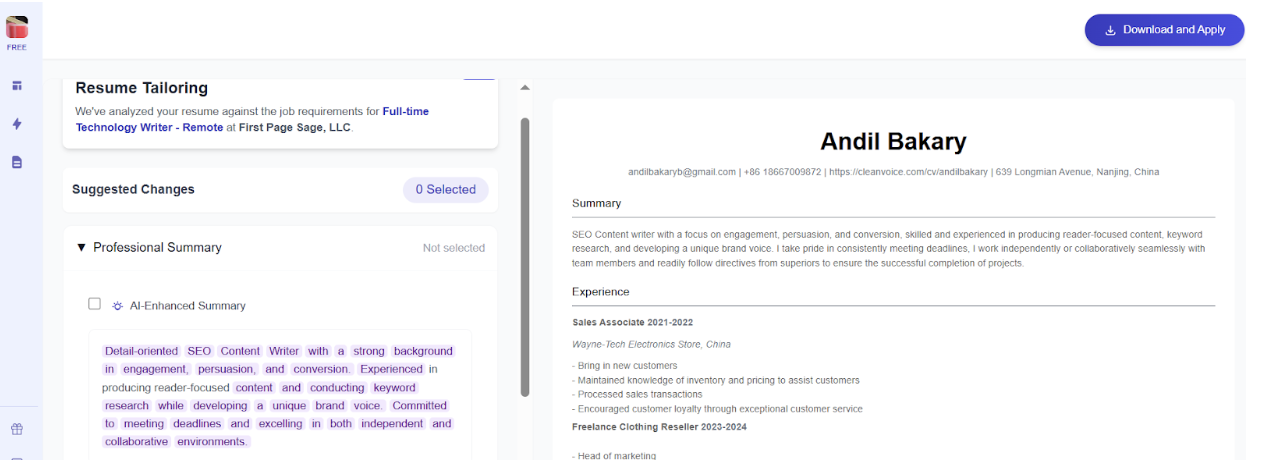
You maintain complete control, and you can always edit the final output to reflect your authentic voice and personality.
Breakdown #3: Beating the Numbers Game with Targeted Volume
Applicants often get stuck between two failed approaches: the "spray and pray" (sending a generic resume everywhere) and the "hope and wait" (sending a few perfect applications and hearing nothing).
Neither works. The recruiter comments about finding 10-15 qualified applicants in the first 100 applications proves that timing and volume are critical. If you're not applying consistently to relevant roles, you're missing the window of opportunity.
The only winning strategy is targeted volume. You need a system that ensures you are a candidate for every single qualified role, not just the ones you happen to see on a Tuesday morning.
How to fix this: This is where thoughtful automation becomes your engine. To be clear, Jobbyo's auto-apply feature isn't a spam bot that blindly applies to anything that has your job title in it. It's a targeted delivery system built on the parameters you set, and only applies to jobs where you match at least 85% of job description requirements.
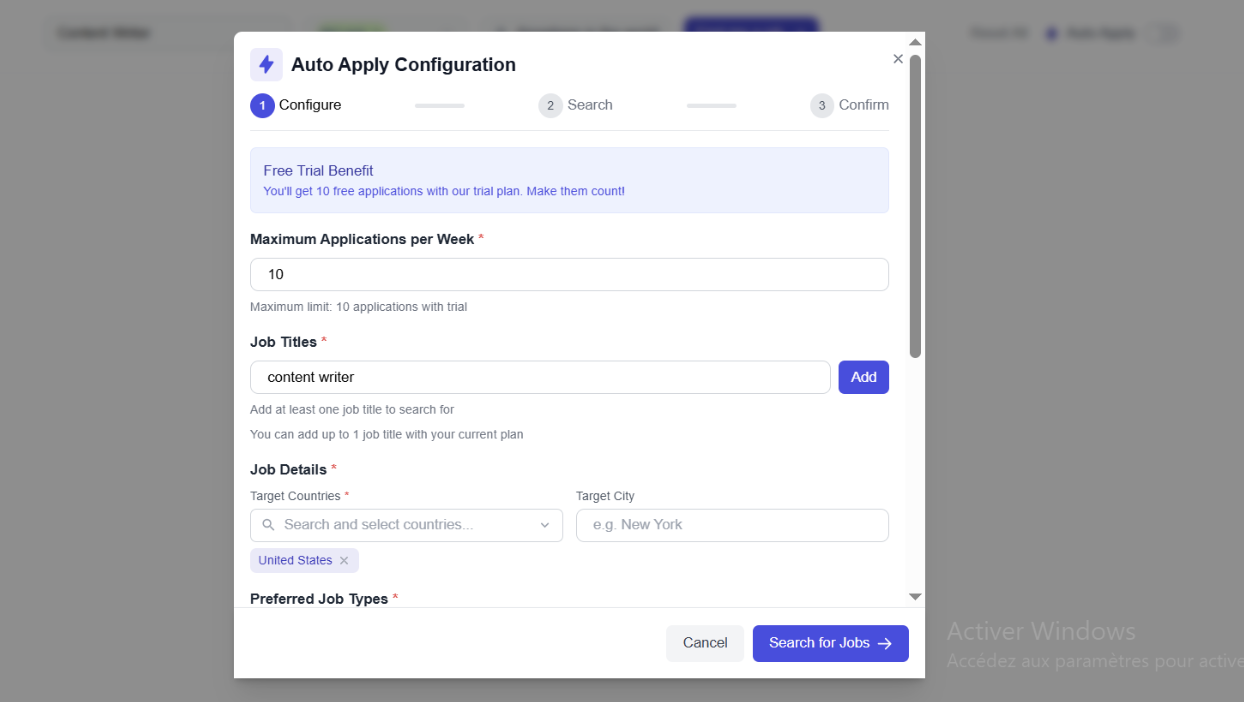
We use the information provided in your resume to make a strong case for why you'd be a great fit for the role. Our goal is to maximize your interview potential, so we'll proactively identify areas where your resume could be strengthened and provide specific recommendations to ensure your application materials position you for success.
- You Define the Target: You provide your job titles, location preferences (remote, hybrid, on-site), salary expectations, and other key criteria.
- AI Sources and Queues: Our system then sources every matching job from across the web. From our job board alone, a single role can pull over 500 openings. These are queued for your review in a comprehensive dashboard.
- You Control the Flow: You can let the system apply on your behalf with your optimized master resume, or you can pause the queue at any time to use the Custom CV feature for a specific role.
This system solves the numbers problem by hitting the volume you need, while the Resume Strength Analysis and Custom CV tools ensure every single application is strong enough to beat the filters.
We are building a system that handles the 90% of job hunting that is repetitive, draining, and broken, so you can focus your energy on the 10% that truly matters: preparing for interviews and choosing the right offer.
How to Land a Dream Job in 2025: A Practical System
We've established the core failures of the traditional job search: the math doesn't work, the general advice, even though technically doable, still needs to be adapted to today's rough market, and first-generation AI tools often create more problems than they solve. But identifying what's broken is only half the battle. The real challenge is building something that actually works.
This system should operate on two levels that work together:
- The Automation Layer: A consistent, high-quality application engine that ensures you have a presence in every relevant opportunity
- The Human Layer: Strategic actions that you take to influence the outcome where it matters most
The automation creates the opportunities. You close them.
1. Master Your Signal with Targeted Volume
"Volume" has become a dirty word in job search advice. But that's because most people are doing volume wrong. It's not enough to use the same resume and cover letter to mass apply to any job that comes your way.
"Recruiters can easily spot applications and resumes that are sufficiently generic to have been used for 6K applications, and most times they won't make it past even the most rudimentary of Applicant Tracking Systems." - Tech career coach.
He said this after a redditor posted about having applied for 6000 in just 5 months and yet can't land any job.
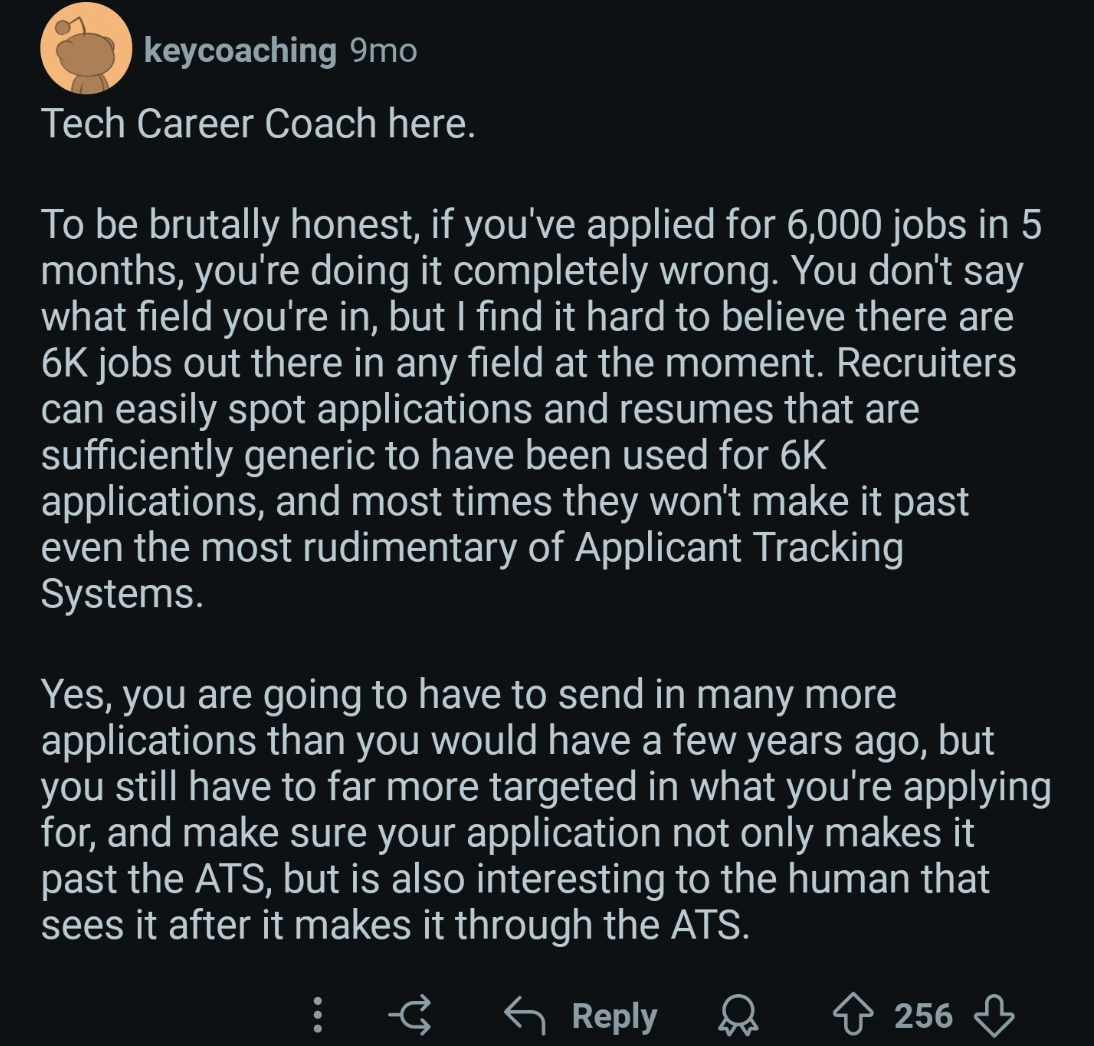
Like mentioned earlier, you need to send out enough applications to be statistically significant while making sure every single application is of the highest quality.

The goal is to ensure your signal—a high-quality, ATS-optimized application—reaches every single relevant role as soon as it's posted. Manually, this is mathematically impossible. There's no way you can manage the scale and quality required with a spreadsheet and bookmark folder full of job boards.
This is where the automation layer becomes essential. The process we outlined earlier solves this problem systematically:
- First, you fix your resume. Using the Resume Strength Analysis and ATS Grader in Jobbyo, you build an ATS-optimized resume that actually gets past those initial filters.
- Then, you let the system work. Your auto-apply setup, configured with your specific criteria, handles the repetitive stuff. It runs in the background, sending out your resume to relevant jobs week after week.
This automated foundation changes everything. It eliminates the daily grind of searching and filling out forms. It solves the numbers problem. But most importantly, it frees your time and energy to focus on the human layer, which is where you actually win the job.
2. Execute High-Leverage Networking
"Networking" advice has become increasingly sophisticated, but it still misses the mark. The standard playbook tells you to build relationships first, get people talking about themselves, then gradually work toward asking for advice or referrals. This approach works, but it's time-intensive and often feels manufactured to both sides.
Both you, the person doing the networking, and the person being approached might sense that the relationship is being built not out of genuine interest, but because someone eventually wants something
The paradigm shift would be: You no longer network to get an application in. You network because an application is already in.
Your Jobbyo dashboard becomes your trigger for human action.

The workflow is straightforward and powerful:
- The system alerts you: You see that Jobbyo has applied you to a Senior Marketing Manager role at Company X
- You identify your target: You find the Director of Marketing or a potential peer on that team on LinkedIn. For this to work, you'll need to make sure you're reaching to someone with decision making power.
- You reach out but it's not a cold ask. Instead of sounding like you're asking for a favor, your message should come across as confident and informed. Them hiring in your specific field means they're problem aware and you might be the potential solution.
Instead of: "Hi, I'm looking for a job, can you help?"
You write: "Hi [Name], I saw your team is doing interesting work with [mention a specific project or area]. I'm a marketing manager with experience in that space and recently applied for the Senior Manager opening. I was hoping to ask a quick question about the team's biggest priorities this year."
This message works because it shows you've done your homework, establishes you as a peer rather than a supplicant, and moves the conversation from "Can you give me something?" to "Can we discuss something of mutual professional interest?"
Your automated application engine creates the context for these high-leverage conversations at scale. The machine handles the coverage, so you can handle the connection.
3. Prepare for the Conversation, Not the Test
Most people approach interviews backwards. They prepare like they're about to be tested; memorizing answers, trying to say the "right" things, focusing on impressing the interviewer. The problem is if you do this, you'll miss out on what's actually happening in the room.
Think about why the interview exists in the first place. The company has work that needs to get done—tasks that require human attention. They've decided they can't handle it with their current team, so they're willing to pay someone's salary, benefits, and overhead costs to help them. That's expensive. They're not doing it for fun.
They're looking for a potential business partner who might be able to help them make more money than they spend on you.
When you walk into that room, you both have something the other needs. They need someone who can deliver results. You need income and meaningful work. It's a mutual evaluation, not a one-way judgment.
This changes everything about how you should approach the conversation. Instead of trying to impress them with perfect answers, you should be figuring out:
- What exactly is their problem?
- How does your experience match what they actually need?
- Can you realistically deliver the results they're looking for?
- Do their expectations align with what you want to do?
These are business questions. And the person across from you is someone with a budget, a deadline, and a problem they hope you can solve.
Every piece of the system we've built leads to this moment.
- Know the problem. The job description is your roadmap. The Custom CV you generated for that specific role already highlighted the keywords and priorities the company values most. Before the interview, you review that tailored CV alongside the original job description in your dashboard. This gives you a clear map of their pain points.
- Gather intelligence. The insights from your networking conversations become your advantage. If a potential peer mentioned, "We're really struggling with lead attribution," you know to frame one of your accomplishments around how you solved a similar attribution challenge.
- Structure your stories. The STAR method (Situation, Task, Action, Result) remains the best framework for behavioral questions. But you don't use it to tell random stories, you use it to tell stories that directly address the problems you've identified, using your accomplishments as proof.
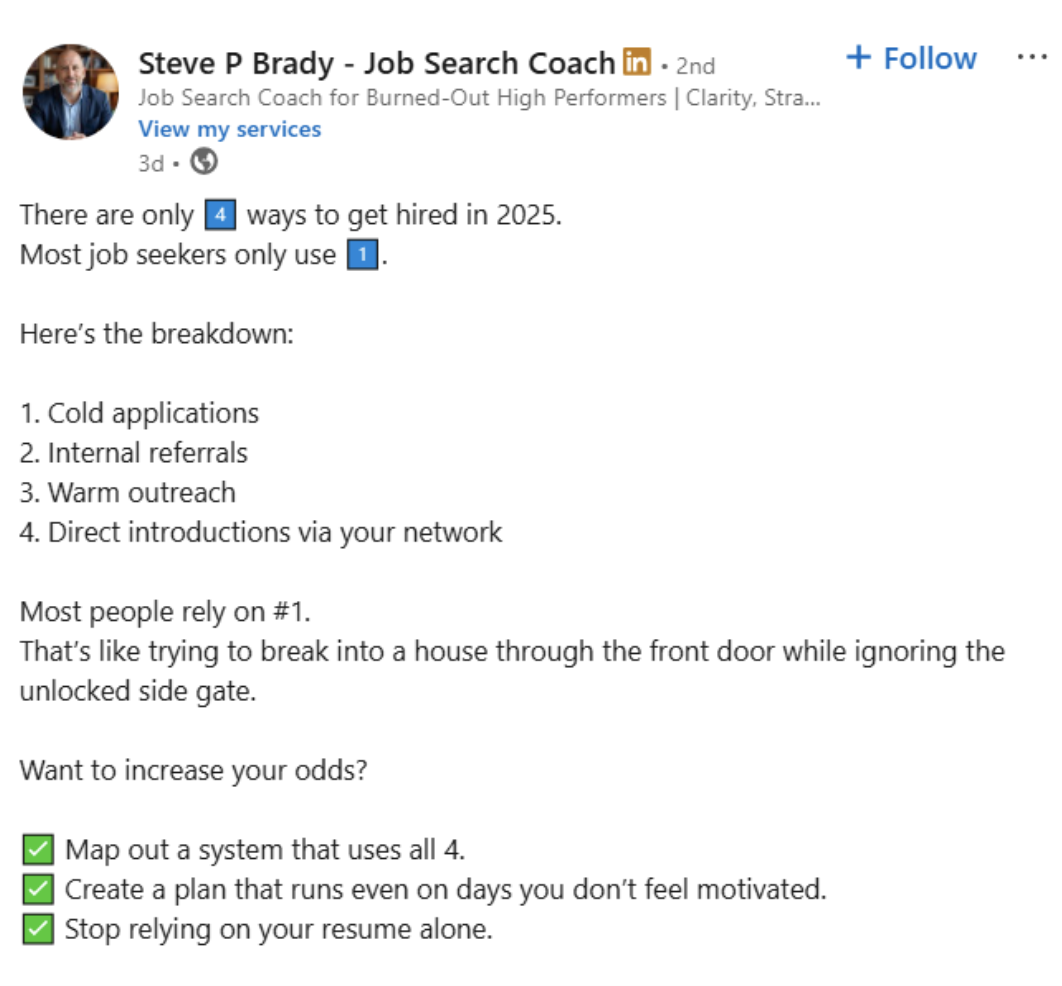
This systematic approach puts you in control. While other candidates hope their experience somehow aligns with what the company needs, you already know it does, and you can prove it.
Final Thoughts
This is the system. It combines the relentless efficiency of thoughtful automation with the irreplaceable impact of human intelligence and connection. It's not a hack or a shortcut. It's a process designed for the reality of today's market, built to put you back in control of your job search.
If you're still convinced that the old job search playbook will work in today's market, ask yourself this: When you spend 20 minutes crafting the perfect cover letter for a role that gets 300+ applications, what are the actual odds that a human will read it?
When you manually apply to three jobs a day while other candidates are reaching dozens, how long can you realistically sustain that pace before burning out?
The job seekers who will thrive in this market are the ones who understand that getting hired isn't about perfect applications anymore. It's about intelligent systems that create consistent opportunity while you focus on what actually moves the needle: having meaningful conversations with the right people at the right companies.
The math has changed. The tools have evolved. Your approach should too.
© 2025 Jobbyo. All rights reserved.